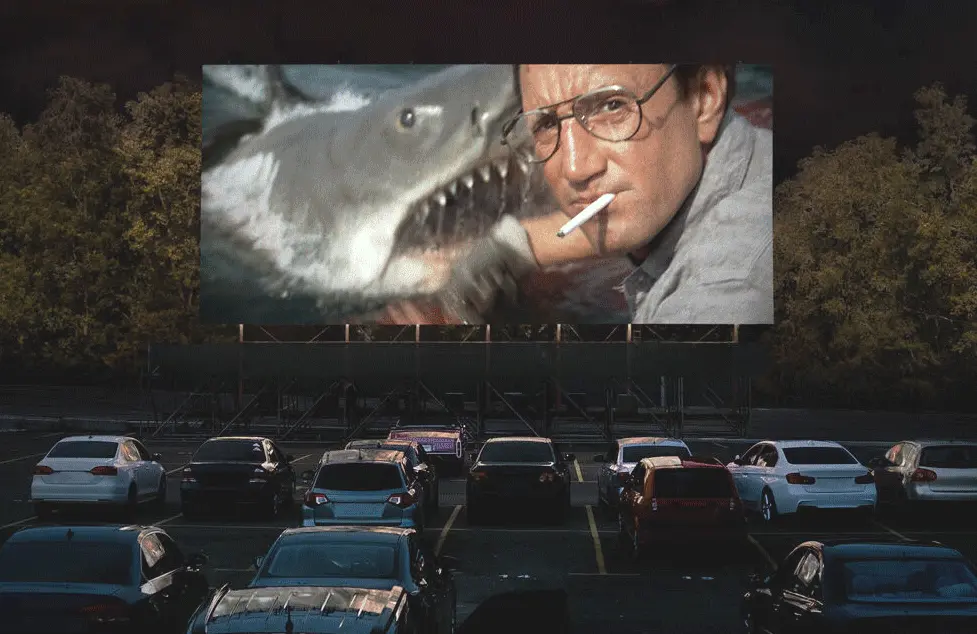Netflix's Voir Gets Good When It Scratches Beyond the Surface
-
 Photo: Netflix
Photo: NetflixNetflix is, if nothing else, streaming's reigning champion of the micro-genre. Through sheer volume, Netflix can turn almost any flavor of television, no matter how specific, into a collection. With its new documentary series Voir, Netflix is adding to its "movie appreciation" micro-genre, which already includes several seasons of The Movies That Made Us.
There's a certain irony, of course, to Netflix — that great killer of cinema — mirco-targeting programming at cinema enthusiasts, but with Voir, at least the streamer can boast the bona fides of an executive producer who's pretty bulletproof with cinephiles in David Fincher, a man who certainly belongs in the conversation of America's great cinematic visionaries of the 21st century.
After captivating critics and audiences alike with the likes of Seven, Fight Club, The Social Network and The Girl with the Dragon Tattoo, Fincher made the move to Netflix in 2017 with Mindhunter, a visually dazzling, narratively compelling series about the birth of behavioral profiling for serial killers at the FBI. Fincher's next big Netflix project came last year with the Oscar-nominated Mank, about the screenwriter behind Citizen Kane. With that film's success, Fincher has now assumed the mantle of keeper of the cinematic temple, and Voir is a chance to show up for worship services.
Voir (French for "to see") is a series of six shorts visual essays, each from a different writer who discusses how a particular film (or films) radicalized, fascinated, or otherwise intrigued them. The writers include filmmakers like Taylor Ramos and Tony Zhou, critics like Walter Chaw, and pioneering film bloggers Sasha Stone (Awards Daily) and Drew McWeeney (originally of Ain't It Cool News). The series is episodic in nature, but in its most compelling segments, Voir lives up to its name and offers real insight into the images and sounds we see in movies. It's enough to make you wish all the episodes were its most compelling ones.
The series kicks off on a flat note with Stone's surface-level essay on Jaws, a segment that's big on heavy-handed verbal poetics but short on any real insight into the movie itself, before inexplicably spinning off at the end into a rather unsupported tangent about how Jaws couldn't exist in the age of Twitter discourse and (oddly) Oscar expectations.
Much better are essays from Zhou and Ramos on subjects like revenge films (centered on the Park Chan-wook film Lady Vengeance) and an incredibly fascinating piece about animation that interviews, among others, the legendary Disney animator Glen Keane, on the subject of character animation. You couldn't ask for more of an authority on the subject than Keane as he unpacks the concept of "appeal" in animation, how it springs from rather mathematical notions of geometric harmony but also how it can lead — and has led — to a rather narrow range of beauty standards for female characters.
At its best, Voir conjugates the twin languages of how cinema communicates to us and how we communicate right back. It places the audience as a necessary and active part of the artistic endeavor that is filmmaking. Our enthusiasms, our gaze, our perceptions (or misperceptions) are all crucial to the experience of the movies. Which is why it frustrates when some of the essays veer toward more shallow observations. McWeeney's episode on Lawrence of Arabia that then pivots into a treatise on antiheroes, while well-argued and supported by some great films, ends up feeling like a (very) long twitter thread arguing that film characters don't have to be likeable. Another episode on how theatrical film has lost ground to television is, on the one hand, interesting in that it attempts to tell this story by focusing on the way visual storytelling is handled in each medium, and how that's changed and evolved through the last 20 years. And yet, unavoidably, it feels more than a little self-serving for a Netflix series to be making proclamations about how television today is just as cinematic as the movies, if not moreso, as it does in its comparisons of the Helen Mirren film The Queen with Netflix's own The Crown.
Walter Chaw's episode on 48 Hours is a standout, though, and hopefully it will be the template for the series if it returns for a second season. With an expert eye for detail, context, and the ways that cinema has been in constant conversation with itself over the years, Chaw unpacks a racial deconstruction of Walter Hill's buddy comedy that is, in fact, not about buddies, nor is it all that overtly comedic. Getting into topics like Eddie Murphy's star persona and the ways in which the film gives Murphy's character rare agency, Chaw weaves in his own unique perspective as the only Chinese kid in an all-white area of Colorado, seeing 48 Hours for the first time as a 9-year-old sneaking into an R-rated movie. Chaw's episode is both an explainer for the film's sneaky artistry, as well as advocacy for how Hill and Murphy were working on a higher level than many of the film's fans even realize.
If Voir ends up falling a bit short of its promise from time to time, it's also, in its bite-sized presentation and moments of real inspiration, an intriguing move into a kind of Vox-ified space. (Netflix does, in fact, offer a Vox-branded explainer series on its platform.) If YouTube is your usual destination for bite-sized videos that break down art, there are far worse options than to have that explainer be David Fincher.
All six episodes of Voir release on Netflix Monday, December 6th.
Joe Reid is the senior writer at Primetimer and co-host of the This Had Oscar Buzz podcast. His work has appeared in Decider, NPR, HuffPost, The Atlantic, Slate, Polygon, Vanity Fair, Vulture, The A.V. Club and more.
TOPICS: Voir, Netflix, David Fincher